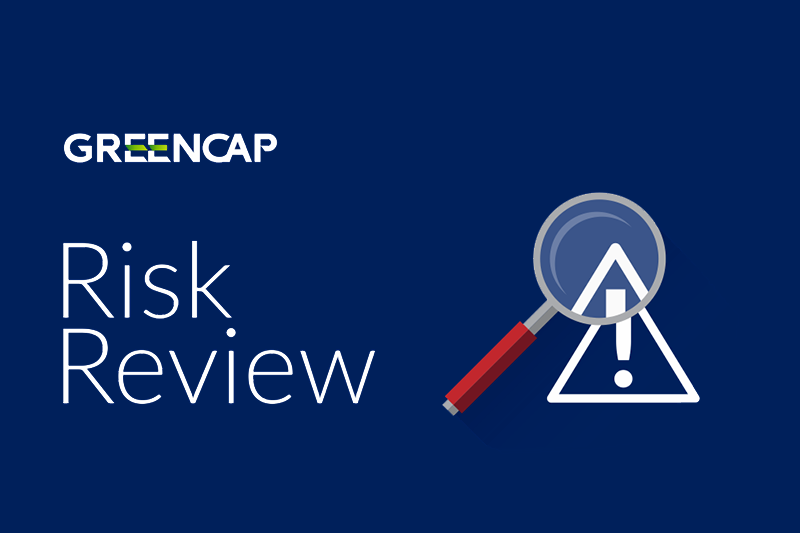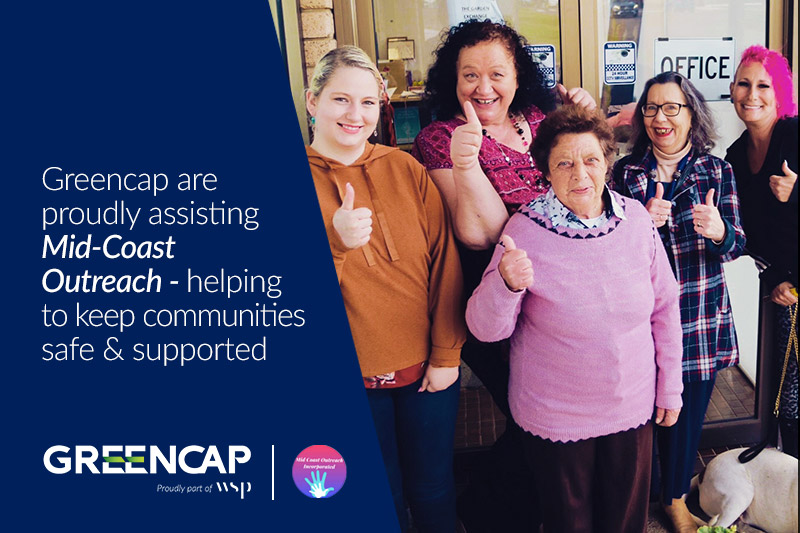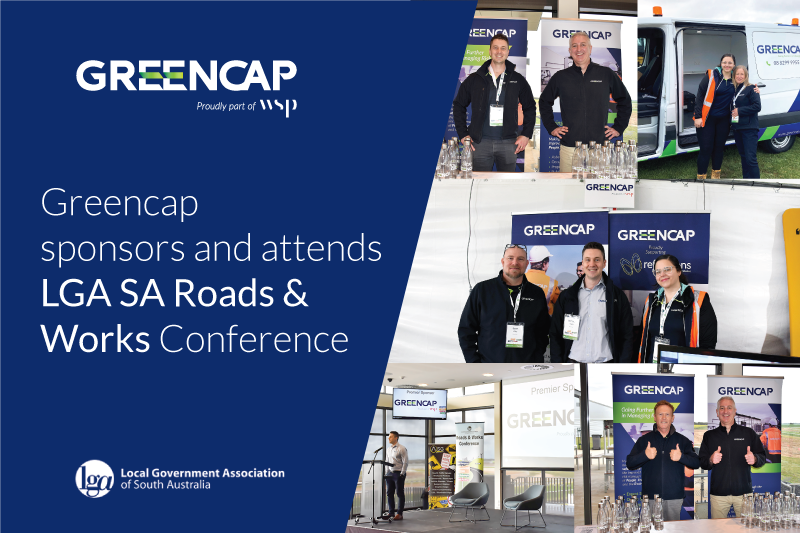News & Insights
Managing Workplace Risks from COVID-19
The COVID-19 pandemic is an unprecedented and challenging environment for businesses, requiring a flexible approach to adequately prepare and respond as it continues to have impacts across Australia and the world.
Businesses, particularly those who employ staff, have a duty under legislation to control hazards and risks in the workplace, as far as is reasonably practicable. This is to ensure the safety of staff and other people, including customers, are not exposed to any health and safety risks that may arise from the nature of their business.
In this risk review, you will find further information on:
- Employer obligations
- Risks to physical and psychological health
- Steps to take
- Consultation with workers in the context of change management
- Advice for working from home safely
- How Greencap can assist your business to manage the risks
What is COVID-19?
Coronaviruses are a large family of viruses that cause respiratory infections. These can range from the common cold to more serious diseases such as Severe Acute Respiratory Syndrome (SARS) and Middle East Respiratory Syndrome (MERS). This new coronavirus was first identified in Hubei Province, China and the disease is named COVID-19. COVID-19 is caused by the severe acute respiratory syndrome coronavirus 2 (SARS-CoV-2).
How is this coronavirus spread?
Coronavirus is most likely to spread from person-to-person through:
- Direct close contact with a person while they are infectious or in the 24 hours before their symptoms appeared
- Close contact with a person with a confirmed infection who coughs or sneezes
- Touching objects or surfaces (such as door handles or tables) contaminated from a cough or sneeze from a person with a confirmed infection, and then touching your mouth or face
Refer to the Australian Government Department of Health website for further information.
Employer Obligations
Australia’s model Work Health and Safety (WHS) laws require an employer to ensure, so far as is reasonably practicable, the health and safety of their workers and others at the workplace. This includes providing and maintaining a work environment that is without risk to health and safety.
It is a legal duty to exercise due diligence to ensure the business complies with its WHS obligations. As such, employers are required to maintain up-to-date knowledge of work health and safety matters as they apply to the business. To meet the obligations with due-diligence, employers and business owners must keep up to date with the latest COVID-19 information and advice, from organisations such as:
- Australian Government Coronavirus COVID-19 information page
- Department of Health
- Advice from state or territory government agencies, including health departments and WHS regulators
To meet obligations, employers and business owners need to adopt proactive risk management strategies in minimising the potential for contracting COVID-19 in the workplace context.
It is important that you:
- Actively consider the context of your business – the workplace, the work carried out there, your workers and visitors who attend the workplace
- Do what you reasonably can to eliminate or minimise the risk of the people at your workplace contracting COVID-19
Risks to physical health
Similar to influenza viruses, COVID-19, has the potential to result from human to human contact. It may also be possible that a person can get COVID-19 by touching a surface or object that has SARS-CoV-2 on it and then touching their own mouth, nose, or possibly their eyes however, this is not thought to be the primary way the virus spreads.
While the Australian Government has implemented necessary control measures to reduce the risk of person-to-person transmission, businesses can still operate and need to ensure the risk to their workers and other persons is effectively managed. Businesses which have a medium to high risk of exposure include those that require frequent and/or close contact with (i.e. within 1.5m of) multiple other people who may be infected with COVID-19. These include, for example, healthcare workers, delivery drivers, retail assistants and hospitality workers providing takeaway services.
Steps to take to protect physical risks
Employers in consultation with staff should complete risk assessments taking into consideration the level of risk presented across various worksites and job tasks workers perform at those sites. For most employers, protecting workers will depend on emphasising basic infection prevention measures.
All businesses should ensure good hygiene and infection control practices are implemented, including:
Reviewing your policies and measures for infection control, including educating workers on best practice.
If appropriate, businesses should develop Policies and Procedures for the prompt identification and isolation of those who may be infected, including visitors to the worksite.
Processes and procedures should also be in place to manage the handling of any personal and confidential information. For instance:
- Employers may have to collect, use, and disclose personal information in order to prevent or manage the risk and/or reality of COVID-19’s rapid spread
- Employers should not disclose the reasons for a worker’s leave or remote working arrangements, except to those who require that information to carry out their employment duties
- Where possible, making reasonable efforts to avoid identifying individuals, employers should notify workers who have been subject to a credible transmission risk of COVID-19 in the workplace. The Office of the Australian Information Commissioner has published guidance on how to protect privacy while ensuring safety
Maintaining good hygiene and cleanliness of the workplace
- Promote frequent and thorough hand washing, including by providing workers, customers, and work site visitors with a place to wash their hands. If soap and running water are not immediately available, provide alcohol-based hand rubs containing at least 60% alcohol; and
- Undertake routine cleaning and disinfecting of surfaces, equipment, and other elements of the work environment
Implementing physical distancing
- Establish policies and practices, such as flexible worksites (e.g. working from home where possible) and flexible work hours (e.g. staggered shifts), to increase the physical distance between workers and reduce exposure with others
- Discourage workers from using other workers’ phones, desks, offices, or other work tools and equipment, when possible
Provision of appropriate personal protective equipment (PPE) to protect workers in accordance with Department of Health guidelines.
All types of PPE must be:
- Selected based upon the hazard to the worker
- Properly fitted and periodically refitted, as applicable (e.g. respirators)
- Consistently and properly worn when required
- Regularly inspected, maintained, and replaced, as necessary
- Properly removed, cleaned, and stored or disposed of, as applicable, to avoid contamination of self, others, or the environment
Risks to psychological health
This is a stressful time for all Australians, the challenges associated with social distancing and isolation, including separation from loved ones, loss of freedom and reduced income, are leading some people to experience feelings of anxiety, boredom, frustration and fear.
Whether small numbers of individuals are quarantined at home or organisations find themselves triggering the mass deployment of remote working there is a need to develop strategies for wellbeing checks on employees.
Steps to minimise worker anxiety
Consider how you will find ways to maintain good mental health during this unprecedented time of social distancing and isolation. To maintain social connection, employers should consider:
- Daily check-ins for workers who are subject to quarantine/self-isolation following travel to high and moderate risk locations
- Providing guidance on how to maintain remain socially connected and access support whilst being physically isolated
- Providing specific guidance to your leaders on how to support their teams' wellbeing while working remotely. Leadership messaging for staff may include providing guidance to workers on how to maintain a positive challenge mindset, expecting and experiencing change and uncertainty, tolerating discomfort but also re-setting expectations and priorities given changing circumstances
- Set workers up with a buddy to provide peer to peer support
- Encouraging workers to use the services of the appointed EAP (employee assistance program) provider for themselves and members of their immediate family
Consultation
With the situation constantly changing, employees are likely to be anxious about the COVID-19 pandemic and could have questions about what will happen to their working arrangements and employment.
Employers have a duty under WHS legislation to provide information to workers about health and safety in the workplace. That includes when it is necessary to propose changes that may affect the health and safety of workers. As such, you need to ensure that you integrate your usual consultation processes even with remote employees, as you update your business practices to deal with the COVID-19 pandemic.
You must consult with workers on health and safety matters relating to the COVID-19 virus. Allow workers to express views to you and take them into account before you make any decisions.
Workers are most likely to know about the risks of their work. Involving them will help build worker commitment to health and safety and increase understanding of any changes you need to make.
Employers should make sure that workers are aware of any on-going obligations around issues and policies such as confidentiality and safe work practices whilst working at home.
Infection Control Plans
You should communicate infection control plans clearly and honestly with workers. Provide clear direction and guidance about what is expected of employees and update them when this changes.
Workers should know:
- When to stay away from the workplace;
- What action to take if they become unwell; and
- What symptoms to be concerned about.
Working from Home Safely
In Australia, employers have the same obligations to workers even if they are required to work somewhere other than their usual workplace, for example, from home.
Working from home may change, increase or create unforeseen work health or safety risks.
Possible new risks include:
- Physical risks from poor work environment, such as workstation set up, poor temperature control, inadequate lighting, electrical safety, trip hazards, poor security and general home environment (including renovations)
- Psychosocial risks such as isolation, high or low job demands, reduced social support from managers and colleagues, fatigue, online harassment and family and domestic violence
While you may not have direct control over an employee’s environment when working from home, as an employer you can minimise risks through implementing the following:
- Provide guidance on what is a safe home office environment, including what a good workstation set up looks like and how to keep physically active
- Require workers to familiarise themselves and comply with good ergonomic practices, for example by referring to a self-assessment checklist
- Maintain daily communication with team members
- Provide continued access to an employee assistance program
- Appoint a contact person in the business that employees can direct concerns to
You should also think about how your existing policies and procedures apply when transitioning to working from home, including:
- Notification of incidents, injuries hazards and changes in circumstances
- Consultation and review of work health and safety processes
- Attendance, timesheets, leave and other entitlements and arrangements
How can Greencap Help?
Greencap is an industry leader delivering practical and proven risk management solutions that assist organisations in improving their health and safety management and performance. A cornerstone of our offering is the capability and expertise specific to evaluating, designing and implementing risk management solutions to support business continuity.
Greencap’s expert team of Health & Safety and Occupational Hygiene consultants can assist you to:
- Identify risks in your workplace including those relating to COVID-19, and develop effective strategies that eliminate or minimise those risks, whilst ensuring continuity of operations
- Provide guidance on the effective return to work of workers as restrictions are lifted
- Provide supporting strategies for both physical and psychological health
- Provide guidance and instruction on effective hygiene techniques and environmental cleaning and decontamination of workplaces
- Provide advice on PPE and Respiratory Protective Equipment selection, use, maintenance, fitting and disposal
Services to Manage COVID-19 Risks
To assist you, Greencap has prepared a guide detailing a range of services that manage your risks related to COVID-19, as well as services that shutdown periods have created the opportunity to undertake.
References
- Australian Government – Coronavirus (COVID‑19) information page
- Department of Health – Coronavirus (COVID-19) health alert
- Department of Health – Coronavirus (COVID-19) resources
- SafeWork Australia – Coronavirus (COVID-19): Advice for employers
- SafeWork NSW – Coronavirus: advice for NSW workplaces
- Worksafe Victoria – Exposure to coronavirus in workplaces
- Worksafe Victoria – Preparing for a pandemic: a guide for employers
- WorkCover Queensland – Coronavirus (COVID-19) workplace risk management
- Victorian Chamber of Commerce and Industry - COVID-19 (Coronavirus) resources for business
- OSHA – Guidance on Preparing Workplaces for COVID-19
- World Health Organisation – Getting your workplace ready for COVID-19
The information in this material is not intended to provide, and should not be relied upon, for legal or professional advice and is subject to change.
This material provides general information only and does not take into account your particular circumstances. Before making any decisions, you should assess whether this material is appropriate for you and obtain legal advice tailored to you having regard to your particular needs and circumstances.
Greencap Pty Ltd (Greencap), its officers, employees and agents believe that the information in this material and the sources on which the information is based (which may be sourced from third parties) are correct as at the date of publication. While every care has been taken in the preparation of this material, no warranty is given for its reliability or accuracy and no responsibility is accepted by Greencap, its officers, employees or agents. If this material contains links to third party websites, Greencap does not control and is not responsible for the information contained within these websites. None of these links imply Greencap’s support, endorsement or recommendation of any other company, product or service.



Greencap acknowledges the Traditional Owners of Country throughout Australia and recognises their continuing connection to land, waters and culture. We pay our respects to their Elders past, present and emerging.




